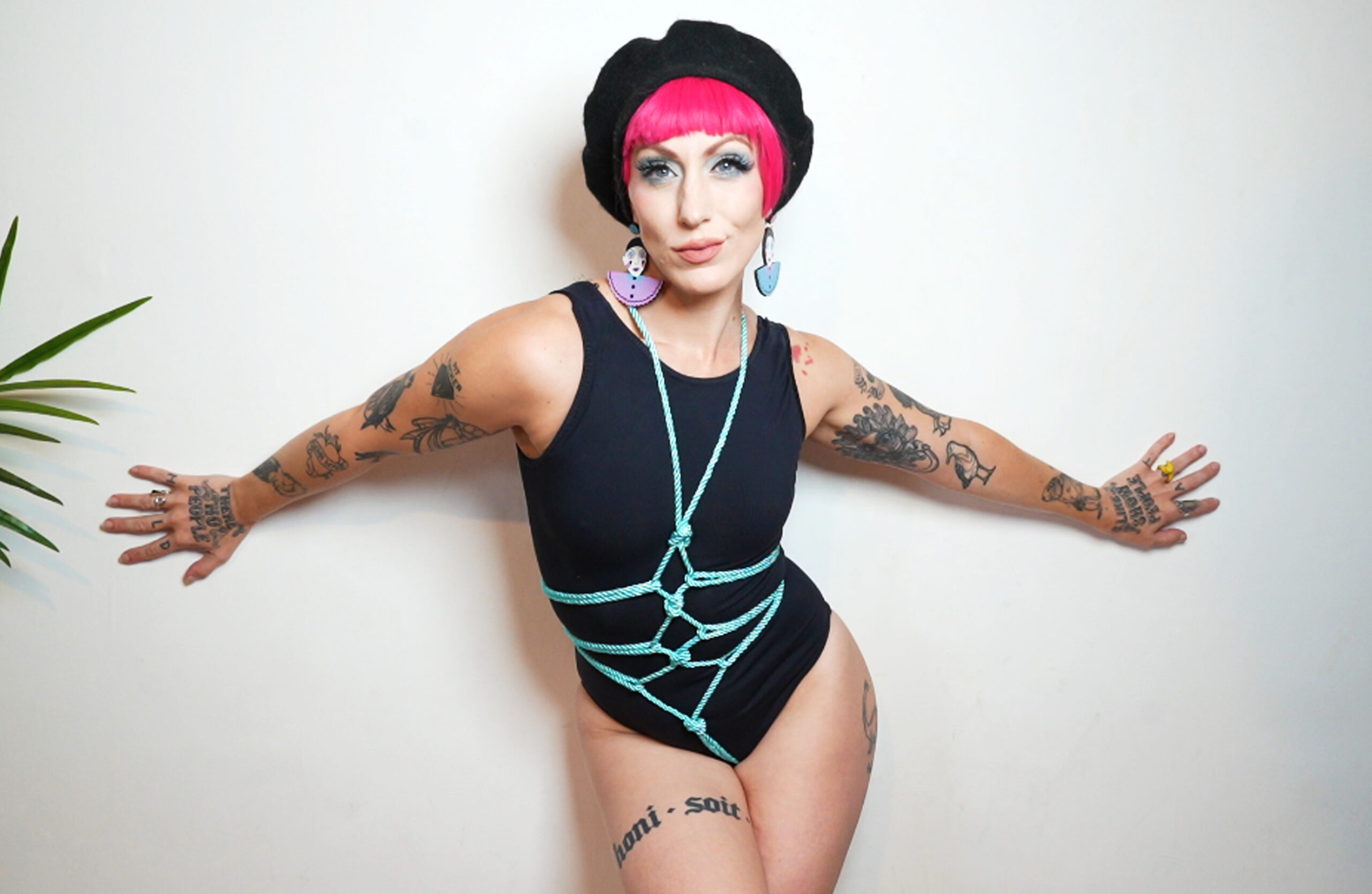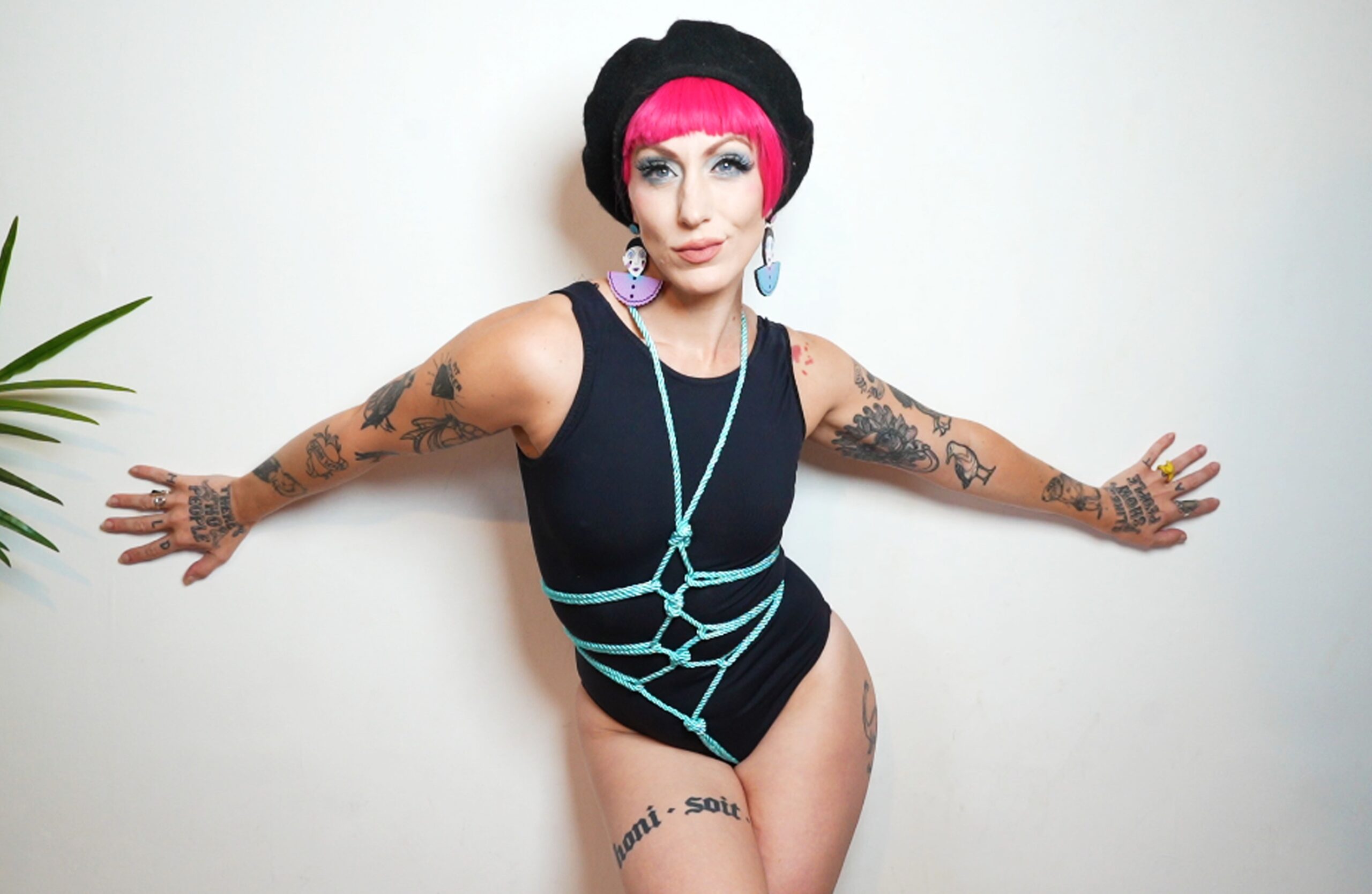Eco-Sexuality: Connecting Sustainability With Sensuality

Defining Eco-Sexuality
Eco-sexuality is an emerging concept that seeks to redefine the relationship between human desire, pleasure, and environmentalism. By intertwining the realms of sustainability and sensuality, eco-sexuality aims to challenge traditional notions of sex and intimacy in light of the pressing ecological crises we face today. This interdisciplinary approach draws from fields such as ecology, psychology, philosophy, and cultural studies to explore new ways of experiencing and expressing desire that are not only fulfilling but also aligned with our planet’s well-being.
The Intersection of Sustainability and Sensuality
Eco-sexuality is an emerging concept that seeks to redefine our relationship with nature and our bodies, acknowledging the intricate connection between sustainability and sensuality. By exploring the intersections of eco-spirituality, ecological awareness, and sensual experience, eco-sexuality offers a holistic approach to understanding our place within the natural world.
- Eco-sexuality recognizes that human intimacy is inextricably linked with the health of the planet, and that sustainable living practices are essential for maintaining a fulfilling and meaningful sex life.
- It challenges traditional notions of pleasure and desire, inviting individuals to cultivate a deeper appreciation for the natural world and our embodied experiences within it.
- Eco-sexuality encompasses not only environmental sustainability but also emotional, social, and spiritual aspects, urging us to re-evaluate our values and priorities in light of this new perspective.
This concept encourages individuals to adopt a more mindful and intentional approach to their relationships with themselves, others, and the natural environment, fostering a profound sense of connection and belonging within the web of life.
Embracing the Holistic Connection Between Human Needs and Environmental Well-being
Eco-sexuality is an emerging concept that seeks to redefine the traditional boundaries between human sexuality and environmentalism. It posits that the pursuit of sustainability and ecological well-being are inextricably linked to the expression and appreciation of human sensuality. This holistic approach recognizes that human needs, including emotional, physical, and spiritual requirements, are intricately tied to the health of the planet.
At its core, eco-sexuality is about embracing a deeper connection between the individual’s experience of pleasure and the state of the environment. It encourages individuals to acknowledge the intricate web of relationships between human desire, consumption patterns, and ecological degradation. By exploring this intersection, eco-sexuality offers a new framework for understanding the complex interplay between personal sensuality and environmental well-being.
This perspective challenges the dominant Western culture’s emphasis on individualism and consumption, instead advocating for a more holistic and inclusive approach to human desire and pleasure. Eco-sexuality invites individuals to consider the impact of their choices on the natural world and to seek out experiences that promote mutual growth, respect, and reciprocity between humans and the environment.
As a concept, eco-sexuality offers a powerful antidote to the environmental degradation caused by unsustainable consumption patterns and the commodification of human desire. By acknowledging the inherent value of human sensuality and its connection to the natural world, eco-sexuality inspires individuals to embark on a journey of discovery and transformation, one that prioritizes the well-being of both people and planet.
History and Context
Eco-sexuality, an emerging concept that seeks to bridge the gap between environmentalism and sensuality, invites us to reexamine our relationships with nature and our own desires. This philosophical framework considers the intricate connections between human sexuality, ecological sustainability, and the well-being of both people and planet. By exploring the intersections of eco-feminism, queer theory, and posthumanism, eco-sexuality challenges traditional notions of sex, intimacy, and ecology, urging us to reimagine sustainable practices that honor the interconnectedness of all living beings.
From Environmentalism to Ecosexual Movement
Eco-sexuality is an emerging concept that seeks to bridge the gap between environmentalism and sensuality, questioning the conventional dichotomy between nature and human experience.
The roots of eco-sexuality can be traced back to the 1960s and 1970s counterculture movement, where artists and activists began exploring the intersection of nature and human desire. This early era saw a fascination with natural forms, bodies, and landscapes as sources of erotic inspiration. The works of artists such as Andy Goldsworthy, who creates sculptures from natural materials like leaves and branches, exemplify this connection.
However, it was not until the 1990s that eco-sexuality began to gain traction as a distinct movement. The publication of Carolyn Merchant’s book “Radical Ecology” in 2002 marked a turning point, as she explored the relationships between human experience and the natural world. This work built upon earlier ideas by feminist theorists like Susan Bordo, who argued that women’s bodies are deeply connected to the land.
Since then, eco-sexuality has grown into a global movement, encompassing artists, writers, activists, and even therapists. The rise of social media platforms has provided an unprecedented outlet for individuals to share their experiences and connect with others across borders. Online communities have formed around topics like “ecosexuality,” “ecoeroticism,” and “nature-based intimacy.”
The ecosexual movement has also spawned a range of creative works, from the poetry of Claire Bidwell Smith to the photography of Heather Dewey-Hagborg, who uses genetic engineering and 3D printing to create sculptures that explore the relationships between human bodies and the natural world.
The Roots of Eco-Sexuality in Indigenous Cultures and Early Feminist Theories
The concept of eco-sexuality, which seeks to integrate sustainability and sensuality, has its roots in indigenous cultures and early feminist theories.
In many traditional indigenous societies, human beings are not separate from nature but an integral part of it. This holistic approach to life is reflected in their spiritual practices, where the interconnectedness of all living beings is deeply revered. For example, in some Native American cultures, the concept of “mitakuye oyasin” or “we are all related,” highlights the intricate web of life that binds humans to the land and other species.
This indigenous worldview has its parallels in early feminist theories, which also sought to challenge the dominant Western paradigm that separates human beings from nature. Theories such as deep ecology, developed by environmental philosophers like Arne Naess and Bill Devall, emphasized the intrinsic value of non-human life and the need to reevaluate our relationship with the natural world.
The intersection of eco-sexuality and sustainability is also reflected in the work of feminist thinkers like Helena Novaes, who explores the connections between sensuality, embodiment, and environmentalism. Her work highlights the importance of considering the sensual and embodied aspects of human experience as a key component of our relationship with the natural world.

Moreover, the concept of eco-sexuality can also be linked to the work of queer theorists like José Esteban Muñoz, who argues that the intersectionalities between desire, pleasure, and sustainability can provide new ways of thinking about the human-nature relationship.
The Emergence of Eco-Sexuality as a Recognized Field of Study
The concept of eco-sexuality has its roots in the early 21st century, emerging as a recognized field of study that seeks to connect sustainability and sensuality. This interdisciplinary approach recognizes the intricate relationship between human sexuality, ecology, and culture.
Historically, the fields of environmentalism and sexology have intersected at various points, but it wasn’t until the 2000s that eco-sexuality began to take shape as a distinct academic field. The publication of books such as “Sex & Sustainability: An Investigation into Ecosexual Theory” by Patrick Curry in 2014 marked an important turning point, highlighting the need for a more nuanced understanding of the intersections between human desire, ecology, and culture.
The rise of eco-sexuality can be attributed to growing concerns about the environmental impact of human activities, particularly those related to consumption and population growth. As awareness about climate change and ecosystem degradation increased, scholars and activists began to explore ways in which human sexuality could be reimagined as a force for ecological sustainability.
Eco-sexual theory draws on a range of disciplines, including ecology, feminist theory, queer studies, and postcolonial thought. It challenges traditional notions of sex and desire, arguing that they are deeply intertwined with the natural world and that human relationships with the environment can be reimagined as opportunities for embodied experience and pleasure.
The emergence of eco-sexuality as a recognized field of study reflects broader shifts in societal values and attitudes towards nature, embodiment, and human flourishing. As concern about the environmental crisis deepens, eco-sexual theory offers a unique perspective on how to imagine alternative futures that prioritize sustainability, justice, and the well-being of all beings – including humans, animals, and plants.

Theoretical Frameworks
The development of theoretical frameworks in various disciplines has played a crucial role in shaping our understanding of complex relationships between human experiences, environmental issues, and societal dynamics. In recent years, scholars have begun to explore the intersectionality of sustainability and sensuality, giving rise to new areas of inquiry focused on eco-sexuality. This emergent field seeks to connect the concepts of ecological responsibility with sensual exploration, acknowledging that our relationships with nature are deeply intertwined with our embodied experiences of pleasure, desire, and intimacy.
Ecosexual Theory and its Implications for Human Behavior
Theoretical frameworks have been instrumental in shaping our understanding of various aspects of human behavior and experience. Among these, ecosexual theory stands out as a significant contribution to the field of sustainability and sensuality. Ecosexual theory posits that humans have an intrinsic connection with nature, which is deeply tied to their sensual experiences. This perspective suggests that the natural world has inherent values and worth, extending beyond its practical uses for human benefit.
This concept challenges traditional Western paradigms that often prioritize human dominance over nature. Instead, ecosexual theory encourages a more embodied and intuitive relationship with the environment, one that honors the interconnectedness of all living beings. By recognizing the sensual and emotional aspects of our experiences in nature, individuals can develop a deeper sense of appreciation, respect, and care for the natural world.
The implications of ecosexual theory are far-reaching and multifaceted. For instance, it can inform strategies for conservation and sustainability by highlighting the importance of preserving ecosystem services that support human well-being. Additionally, it can inspire new approaches to education, art, and activism that emphasize the value of nature in enhancing our sensual and emotional lives.
Moreover, ecosexual theory can help bridge the gap between environmentalism and embodied experience. By recognizing that human behavior is shaped by sensual and emotional responses to the natural world, individuals can cultivate a greater sense of agency and responsibility for their impact on the environment. This, in turn, can foster a culture of sustainability that values both the practical and the poetic aspects of our relationships with nature.
The Role of Sensuality in Ecosexual Ecology
Eco-sexuality is an emerging theoretical framework that seeks to bridge the gap between sustainability and sensuality, challenging traditional notions of ecological conservation by emphasizing the importance of embodied experiences and sensual connections with nature.
At its core, eco-sexuality posits that the natural world has inherent qualities that can be experienced through touch, taste, smell, hearing, and sight – qualities that have been largely marginalized in mainstream environmental discourse. By reclaiming these sensory dimensions, eco-sexuality invites individuals to engage more deeply with their surroundings, fostering a sense of reciprocity and intimacy with the land.
This approach also resonates with the concept of “thin objectivity,” coined by historian Jane Bennett, which suggests that non-human entities can be perceived as imbued with qualities of agency and personhood. Eco-sexuality takes this idea further by highlighting the sensual aspects of these non-human entities, allowing individuals to form intimate bonds with trees, waters, or wildflowers.
By situating sensuality at the forefront of ecological concerns, eco-sexuality also challenges traditional power structures and binaries that have historically dominated environmental debates. It promotes a more inclusive and participatory approach to conservation, one that acknowledges the diverse ways in which humans – particularly marginalized communities – experience and interact with nature.
Furthermore, eco-sexuality draws inspiration from various fields, including queer theory, feminist ecology, and sensory studies. By integrating these perspectives, this framework provides new avenues for exploring the intersections between embodiment, power, and environmentalism.
The implications of eco-sexuality extend beyond the realm of environmental conservation, offering a unique lens through which to examine the complexities of human existence. By blurring the boundaries between nature and culture, sensuality and reason, we may uncover novel ways to address pressing global challenges – such as climate change, social justice, and human well-being.
Eco-Sexuality and the Concept of Biophilia
Theoretical frameworks, such as eco-sexuality, offer a unique lens through which to examine the intricate relationships between human sensuality and environmental sustainability. One concept that informs this idea is biophilia, a term coined by biologist E.O. Wilson, which suggests that humans have an innate tendency towards nature and a deep-seated desire to connect with it.
Eco-sexuality, as a theoretical framework, posits that our sensual experiences are inextricably linked to the natural world. This perspective argues that our desires, needs, and emotions are not separate from the environment, but rather, they are an integral part of it. By recognizing this interconnection, eco-sexuality encourages individuals to reevaluate their relationship with nature and themselves, seeking to cultivate a more harmonious and sustainable expression of sensuality.
Biophilia plays a significant role in this framework, as it highlights the fundamental human drive to engage with and appreciate the natural world. This innate tendency can be channeled into eco-sexual practices that promote ecological awareness, conservation, and sustainability. By exploring our connections with nature through sensual experiences, we may develop a deeper sense of empathy for the planet and its inhabitants, fostering a more holistic understanding of ourselves and our place within the ecosystem.
Practices and Applications
Eco-sexuality is an emerging concept that seeks to bridge the gap between environmentalism and sensuality, recognizing the intricate relationships between human desire, ecological well-being, and sustainable living. This interdisciplinary approach draws from fields such as environmental psychology, sustainability studies, and queer theory, inviting us to reevaluate our assumptions about the natural world and our place within it. By exploring the intersections of eco-sexuality with practices and applications in language English, we can cultivate a deeper understanding of how our relationship with the environment informs and is informed by our most intimate desires.
Ecosexual Rituals and Ceremonies for Sustainability
Eco-sexual practices and ceremonies are emerging as a powerful tool for promoting sustainability and environmental stewardship. By integrating sensual experience with ecological awareness, individuals can cultivate a deeper appreciation for the natural world and foster a sense of responsibility towards its preservation.
Ecosexual rituals and ceremonies can take many forms, from intimate gatherings in nature to communal celebrations of the seasons. These practices often involve sensory experiences, such as touch, taste, and scent, which can heighten awareness and connection with the environment. For example, a forest bath or a beach walk may be experienced as a sensual journey, rather than just a physical activity.
Some ecosexual practitioners are drawing on ancient traditions and mythologies to inform their ceremonies, such as indigenous rituals that celebrate the cycles of nature. Others are experimenting with new forms of expression, such as art installations or performance pieces that explore the relationships between humans and the natural world.
The applications of eco-sexuality extend far beyond personal experience, however. By creating spaces for sensual connection with the environment, individuals can help to build community and foster a sense of shared responsibility for sustainability. Ecosexual rituals can also serve as powerful tools for education and activism, raising awareness about environmental issues and inspiring collective action.
As the intersection of sensuality and ecology continues to evolve, it is likely that new forms of practice and ceremony will emerge. Whether through art, performance, or intimate gatherings in nature, eco-sexuality offers a unique perspective on the relationships between humans, the environment, and our place within the natural world.
Ecosexually-Inspired Art and Performance
Eco-sexuality is an emerging field that seeks to integrate ecological awareness and sustainability into intimate relationships between humans, nature, and each other. This concept challenges traditional notions of sex as a separate entity from the natural world, instead embracing the interconnectedness of all living beings.
Ecosexually-inspired art and performance are essential aspects of this movement, aiming to raise awareness about the intricate relationships between human desires, environmental degradation, and the embodied experience of sustainability. Through innovative artistic expressions, ecosexual artists explore the intersections of intimacy, ecology, and spirituality, prompting audiences to reconsider their values and behaviors in relation to the natural world.
Incorporating elements of performance art, installation, and multimedia, eco-sexually-inspired works often blur the boundaries between public and private spheres. cami and shorts They may utilize natural materials, reclaimed waste, or found objects to create immersive environments that convey the interconnectedness of human experience and environmental well-being. By sharing these experiences with others, ecosexual artists inspire empathy, encourage critical thinking about consumerism and sustainability, and promote a sense of collective responsibility towards the planet. erotic vibrating strokers
The applications of eco-sexuality extend beyond the realm of art and performance. hardcore cock rings It influences various aspects of society, from fashion and design to urban planning and conservation policies. By redefining what it means to be intimate with nature, ecosexual thought encourages individuals to adopt more sustainable lifestyles, embracing practices that prioritize the well-being of both humans and ecosystems.
Eco-Sexuality in Education and Community Development
Eco-sexuality is an increasingly recognized concept that seeks to integrate sustainability and sensuality in various aspects of life, including education and community development. This approach acknowledges that human desire and intimacy are deeply connected to the natural world and our relationship with it.
In the context of education, eco-sexuality can foster a deeper appreciation for nature and its rhythms, encouraging students to develop a more mindful and respectful attitude towards the environment. By incorporating eco-friendly practices into sex education curricula, schools can promote healthier relationships between individuals and the natural world. For instance, teachers could explore topics such as sustainable intimacy, body positivity, and environmental awareness, helping students develop a more holistic understanding of their desires and boundaries.
Furthermore, eco-sexuality can inform community development initiatives that prioritize sustainability and social justice. By centering sensuality and pleasure in the design of community programs, organizations can create spaces that nurture connections between people and the environment. This might involve incorporating eco-friendly practices into wellness retreats, community gardens, or artistic initiatives that celebrate nature’s beauty.
Ultimately, embracing eco-sexuality in education and community development can lead to a more holistic and sustainable approach to intimacy, relationships, and environmental stewardship. By reconnecting human desire with the natural world, we can cultivate a culture that values the interconnectedness of all living beings and strives for a more harmonious coexistence.
Critical Perspectives
Eco-sexuality, a relatively new term that has emerged in recent years, refers to an embodied relationship between sustainability and sensuality. This concept challenges traditional notions of environmentalism as either apolitical or overly abstract, instead positing that sensual experience and pleasure can be integral components of a sustainable lifestyle. By exploring the connections between ecology, intimacy, and embodiment, eco-sexuality seeks to rethink the ways in which we understand our relationships with the natural world, our own bodies, and each other.
Critiques of Eco-Sexuality as a Romanticized Form of Environmentalism
Eco-sexuality, often romanticized as a form of environmentalism that advocates for living in harmony with nature and embracing sensual experiences inspired by the natural world, has been subject to various critiques from different critical perspectives.

One critique comes from intersectional feminist theories, which argue that eco-sexuality reinforces a privileged and white-centered view of nature and environmentalism. By emphasizing the importance of reconnecting with nature through sensual experiences, eco-sexuality may overlook the systemic injustices faced by marginalized communities, such as indigenous peoples, who have been living in harmony with nature for centuries without being recognized or valued.
Another critique comes from postcolonial and decolonial theories, which contend that eco-sexuality’s emphasis on ” reconnecting” with nature perpetuates a nostalgic and romanticized view of pre-colonial societies. This perspective highlights how colonialism has disrupted the relationships between humans and the natural world, and argues that eco-sexuality’s focus on restoring a mythical harmony with nature ignores the real-world impacts of colonialism.
A third critique comes from queer and trans theories, which question the assumption that sensual experiences in nature are inherently liberating or empowering for all individuals. These critiques argue that environmentalism and sensuality can be used to reinforce heteronormative and cisnormative ideals, thereby erasing the experiences of LGBTQ+ individuals who do not fit into these norms.
Finally, eco-sexuality has also been critiqued from a critical perspective on capitalism, which views its emphasis on sustainability and environmentalism as a way to commodify and market nature. This critique argues that eco-sexuality’s focus on sensual experiences in nature is often tied to a desire for luxury and exclusivity, thereby perpetuating the exploitation of natural resources and reinforcing unsustainable consumption patterns.
The Intersection of Ecosexuality with Other Social Justice Movements
Eco-sexuality, an increasingly discussed concept within social justice circles, seeks to bridge the gap between sustainability and sensuality, acknowledging that human sexuality plays a crucial role in our relationship with the environment. By recognizing the intricate connections between sex, nature, and social justice, eco-sexual perspectives shed light on the intersections of ecological consciousness, body positivity, and feminist theory.
One critical perspective is to explore how patriarchal norms have historically separated the human experience from the natural world, leading to a disconnection between our bodily needs and the health of the planet. By reclaiming and redefining sensuality in relation to nature, eco-sexualities challenge these norms and promote a more holistic understanding of human existence. fetish squirting dildos
Another critical perspective considers the role of intersectionality within eco-sexuality. For instance, exploring how systemic injustices against Indigenous women and non-binary individuals intersect with environmental degradation highlights the disproportionate impact on marginalized communities. This lens reveals how traditional notions of sustainability can be recentered around the needs and voices of those most affected by ecological exploitation.
A key intersection in this conversation is between eco-sexuality and feminist theory, particularly posthumanist feminism. By considering the feminine as a symbol for nature and the cycles of life, eco-sexual perspectives draw parallels with posthumanist thought on redefining agency and embodiment beyond human-centric frameworks. This leads to innovative approaches for understanding desire, pleasure, and the boundaries between species.
Eco-Sexuality and the Politics of Body Autonomy
Eco-sexuality is an interdisciplinary approach that seeks to reconcile environmental sustainability with human sexuality and sensual experience. This critical perspective emphasizes the interconnectedness of human relationships, nature, and the environment, and challenges traditional Western notions of sex and desire as separate from or antithetical to ecological concerns.
From a critical perspective, eco-sexuality questions the dominant paradigm that views human beings as autonomous individuals who have dominion over nature. vegan friendly Instead, it posits that our bodies are deeply entangled with the natural world and that our desires, pleasures, and sensations are inextricably linked to the well-being of the planet.
This perspective is closely tied to feminist and queer critiques of power dynamics, highlighting how the exploitation and commodification of human bodies have contributed to environmental degradation. Eco-sexuality also acknowledges the historical and systemic inequalities that have led to the marginalization of certain groups, including women, LGBTQ+ individuals, and indigenous populations.
The politics of body autonomy are central to eco-sexuality, as it seeks to reclaim and redefine our relationship with our bodies in light of environmental concerns. This includes recognizing the intricate web of life that surrounds us, respecting the interconnectedness of all living beings, and acknowledging the intrinsic value of non-human nature.
Shop finger vibrators at Peaches and Screams Explore anal butt plugs for men at Peaches and Screams Shop intimate shaving products for smooth and comfortable results at Peaches and Screams Discover Vaculock sex systems at Peaches and Screams Buy natural and regular condoms at Peaches and Screams Explore Sportsheets BDSM gear for exciting restraint play at Peaches and Screams Shop Boxer Games for fun and provocative entertainment at Peaches and Screams Shop Sliquid lubricants for natural and smooth intimacy at Peaches and Screams
Divine Magazine C4YL Andrea McGinty Art






















